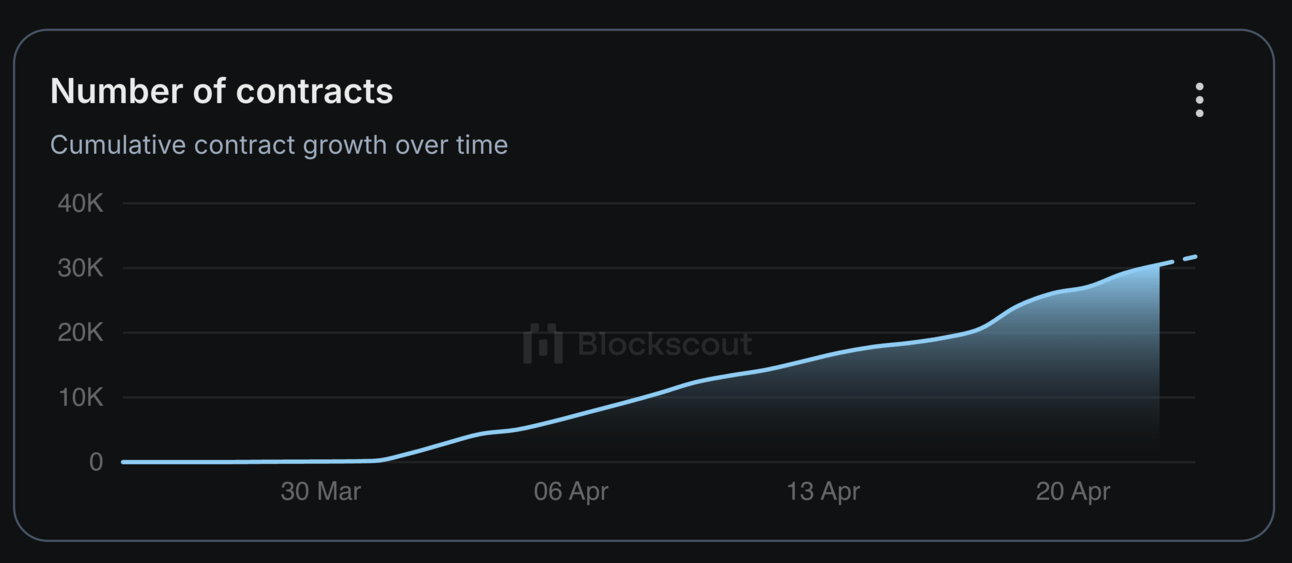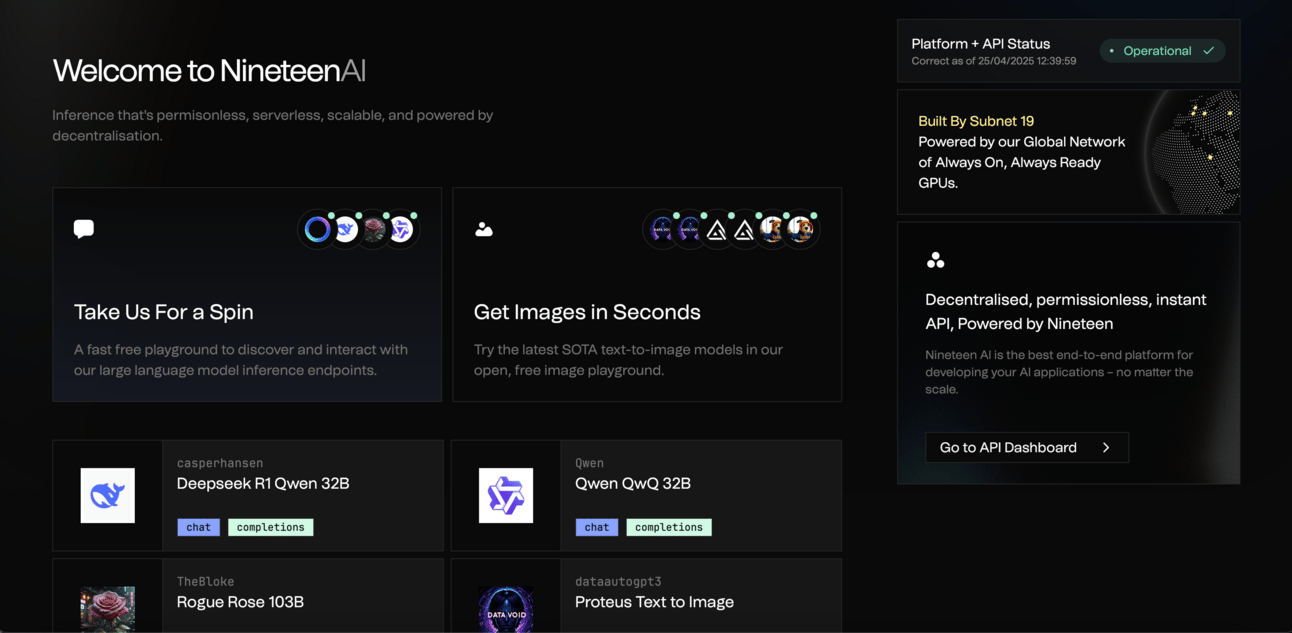
GM {{first_name}} !
Animal spirits are officially back. 🦁
Bitcoin smashed through $90K. ETH reclaimed $1,700. Solana hit $150 like it’s 2021 again. CME is dropping XRP futures.
But it’s not just the majors pumping. Meme coins are melting faces.
Fartcoin surged 41% this week, now hovering around $1.07 with a $1B market cap and $10M in net inflows. It just leapfrogged Bonk to claim the #2 meme spot on Solana. Peak degen capital rotation.
And while the market parties, OpenAI’s cooking up its own social network. Internal prototypes are already live, built around ChatGPT’s image generation with a social feed baked in. Early days, but the intent is clear: they’re not done reshaping the internet.
It’s still unclear whether this will be a standalone app or folded directly into ChatGPT, but one thing’s obvious: OpenAI is gearing up to compete with X, Instagram, and Facebook.
Why now? Real-time data.
Owning a social feed means tapping directly into the freshest, most valuable training fuel—user-generated content.
We’ve seen the pattern: a viral tweet on X → millions of user interactions → the model gets sharper. Now imagine owning that feedback loop from start to finish. That’s the game Mr Altman is playing.
Of course, it raises bigger questions. How that data gets collected, used, and protected will matter *a lot* especially as AI seeps deeper into everyday life.
Chat is just the appetizer. OpenAI’s gunning for AGI, and the main course is all the data you create.
Also: maybe it’s time we stop being polite to our AI models..
🚨 Final call! We’re hiring a sharp researcher-writer to join the team as we expand into Web2 AI.
What we’re looking for:
A killer writer and native English speaker
Self-directed learner with deep curiosity and good knowledge of AI
Can turn complex topics into clear, compelling insights
Sound like you? Come join us!


Here’s what’s trending this week:
🤝 FLock just locked in a heavyweight collab with Alibaba Cloud’s Qwen, one of the top open-source LLM families out there.
🔥 In the Kaito AI Pre-TGE Arena, Theoriq shot to #2 thanks to their community of Yappers. To keep the momentum alive, 3 million Theoriq tokens are now being released across 12 weeks.
🪂 Balance’s EPT airdrop is live. If you’re an E-PAL user, early supporter, NFT holder, or a day-one community member, you’ve got until July 20 to claim your tokens.
Now let’s talk markets.
AI coins are ripping again. TAO jumped 40% this week, riding the same wave that sent AI stocks like NVIDIA and Microsoft up 34% in April.
BTC’s push to $94K (+10% this week) is throwing jet fuel on the fire, with AI tokens leading the charge. The market’s clearly betting that if Bitcoin keeps climbing, AI sees the biggest upside.

For now, the AI trade is running hot. But if Bitcoin flinches and stalls below $94K, AI might be the first to bleed.
AI tokens are still heavily chained to Bitcoin’s momentum. Add in rising competition from other crypto narratives and the still-wobbly path to real-world AI adoption, and the runway isn’t as clear as it looks.
Enjoy the run, but stay safe my friends!

Gensyn Testnet Usage Surges

Earlier this month, Gensyn quietly shipped its public testnet.
25K+ verified users. Over a million model downloads on Hugging Face. Not bad for a test phase.
So what exactly is Gensyn building?
At the core, it’s a decentralized compute protocol for training AI. Think AWS…except crypto-native, censorship-resistant, and up to 80% cheaper.
It taps idle GPUs anywhere in the world and turns them into an open marketplace for compute.
No middlemen. Just straight-up compute-for-crypto.
Built on a custom Ethereum rollup, Gensyn verifies work with on-chain proof and handles payments in real time. The system is trustless, fair, and open.
Here’s your cheat sheet:
RL Swarm tracks contributions across nodes using blockchain identities, so distributed training doesn’t turn into distributed chaos.
Verde verifies AI tasks on untrusted hardware, which is kind of a big deal if you’re outsourcing to anonymous GPUs.
SkipPipe keeps training stable even if half the network goes offline (literally).
Diverse Expert Ensembles power mixture-of-experts models that learn faster and generalize better.

Source: gensyn.ai
Gensyn raised $43M last year from heavy hitters like a16z Crypto.
That’s for building the decentralized layer for the next generation of open-source AI. One where models are trained anywhere, verified on-chain, and run by communities, not corporations.

🌴 Nineteen AI (Bittensor Subnet 19)

Rayon Labs is going full throttle on Bittensor with Nineteen AI, an open, decentralized inference platform on Subnet 19.
It lets anyone serve or tap into LLMs and image models, no gatekeepers involved.
And it’s fast + cheap:
Current benchmarks show SN19 pushing 300 tokens/sec on Llama 3.1 8B.
It costs $0.00 to $0.30 per million tokens. That’s not a typo. It’s gunning for the same turf as the industry’s top model-as-a-service providers, such as Together.ai and FireworksAI.
In true Web2 fashion, SN19 doesn’t run on centralized infra. It’s a swarm of independent miners and validators using their own hardware to serve open-source models like DeepSeek R1 Qwen and Flux Dev.

Source: nineteen.ai
Miners earn for being fast and accurate. Validators keep them honest. No single point of failure, no vendor lock-in.
And Rayon isn’t stopping there. They’re also behind Subnets 56 and 64, building out the connective tissue for Bittensor’s multi-subnet future. Their secret weapon is Fiber—a task-routing framework that adds intelligence to how workloads get distributed.
It makes SN19 feel less like a chaotic mesh, more like a coordinated neural net.
So what’s the play?
Nineteen AI is positioning itself as the Bittensor-native alternative to centralized inference APIs. It’s still early days, but the signal is strong: open models, near-zero cost, and a fully permissionless runway for scaling AI.
If you’re bullish on crypto-native infra, this is one to watch.


Protocol Updates
Eliza Labs has launched auto.fun, a no-code AI agent launchpad designed to let anyone deploy autonomous agents across web3 platforms. Backed by a “fairer than fair” token model, it supports transparent, open-source agent operations.
Nous Research has released Minos, a fast and high-quality binary classifier for detecting LLM refusals, built for redteamers and jailbreakers. Powered by ModernBERT-Large (400M) from AnswerAI, it's designed for both accuracy and speed.
Aethir has launched AI Unbundled, an industry-wide alliance uniting top innovators like 0G Labs, Biconomy, ChainGPT, IoTeX, Oasis, and more to accelerate AI x Web3. The alliance offers decentralized compute, open datasets and funding for AI builders.
The Cookie API 1.0 is now live, delivering real-time, structured crypto data for builders, analysts, traders, and AI agents. It includes cross-chain tracking, and a plug-and-play MCP server.
0G Labs has announced the upcoming launch of Testnet V3 (Galileo), featuring major architectural and performance improvements. With its release, Testnet V2 (Newton) and the Storage Standard Network will be deprecated.
Giza Tech successfully closed a $1.5M community round via Legion, attracting 1,700+ supporters globally to advance its vision of Xenocognitive Finance.
Alchemist AI has launched API Builder, a no-code tool that lets users connect any external API directly into their apps. Is this the web3 version of Lovable?
Upcoming Launches
AI Agents
Solace won first place at the Virtuals Protocol Hackathon (congrats!) with its AI companion for mental wellness. The team is a group of smart university students.
Tracy Agent is now live, bringing NBA-level analytics to fans via TracyAI and tracy.tech, with real-time game reports, stat breakdowns, and smart predictions. Is this the start of AI agent utility in sports?
The Space and Time Agent is now live on Heurist Mesh, enabling natural language queries that generate ZK-verified SQL for trustless, multi-chain blockchain analytics.
Top Hat launches Ruby, an AI assistant built on its stack and custom MCPs, designed specifically to automate low-leverage tasks for crypto development teams.
Cambrian has launched as the first AI agent infrastructure built for Sei, enabling developers to build autonomous agents, smart chatbots, and on-chain automations through the Sei Agent Kit.
Fetch.ai has launched TransactAI on Agentverse, an autonomous payment agent. It enables seamless agent-to-agent messaging for registration, off-chain transfers, smart escrows, and on-chain withdrawals.
Allora announced Drifter, an autonomous BTC perp trading agent by RoboNetHQ, now live on Drift Protocol and powered by Allora's collective intelligence network.
Kortix introduced Suna, the world's first open-source general AI agent designed to operate like a human. Suna can autonomously perform complex tasks such as financial analysis, market research, and data extraction.
Pilot3 is now live on Virtuals, bringing AI-powered trading to the forefront with PTAI. It delivers real-time sentiment analysis with intuitive insights.
Web2 AI
Perplexity has launched its new iOS Voice Assistant on the App Store, enabling users to browse the web, book reservations, send emails, manage calendars, play media directly from the app.
OpenAI’s gpt-image-1 brings powerful image generation to the API. Developers can now create high-fidelity visuals, explore diverse styles, edit precisely, and render text consistently.
Superpower has raised a $30M Series A led by Forerunner and Day One, with support from Steve Aoki, Vanessa Hudgens, Giannis Antetokounmpo, and other notable backers. They’re building the world’s first health super app.
Google released Gemini 2.5 Flash, its first hybrid model that lets users toggle "thinking" on or off. With the new thinking_buget parameter, developers can fine-tune quality, cost, and latency—delivering leading price-to-performance efficiency.
Goodfire has raised a $50M Series A and unveiled Ember, a universal neural programming platform that gives developers programmable access to an AI model’s internal processes. Backed by Anthropic, Menlo Ventures, Ember enables precise behavior shaping and improved model performance.

New section alert: We’re serving up a quick learning nugget every week, so you pick up something new without even trying.
This week: Did you catch our beginner’s guide to Fine-Tuning on COT Learn? It’s part of our new go-to hub for learning AI and crypto.
Quick breakdown: Fine-Tuning vs. RAG
While fine-tuning changes the model itself, RAG (Retrieval-Augmented Generation) leaves the model unchanged and feeds it updated information from external sources.
In a nutshell:
Use RAG when information changes often or must be sourced live.
Use fine-tuning when style, tone, or task-specific accuracy is more important.
Full, beginner-friendly explainer here:
Also, our Crypto AI Primer just got a major glow-up! Worth a revisit. Check it out here.
🔥 Our Weekly Top 5
A report by Grayscale on Bittensor
Chutes has process over a trillion tokens in just a few months
How quickly are supercomputers scaling?
The Dashdotfun waitlist is open for people to register
Why it's crucial that we understand how AI models work by Anthropic’s CEO
That’s a wrap for this week! Got thoughts, feedback, or something cool to share? Just hit reply. We read it all.
But wait:
Are you in our telegram channel yet? Cyra, our AI researcher, drops daily AI alpha that you don’t want to miss. See it for yourself.
Catch our podcast summaries too, complete with detailed show notes. Saves us hours
And if you want to jam with us directly, hop into our Discord
Cheers,
Teng Yan & Issy
Did you like this week's edition?
This newsletter is intended solely for educational purposes and does not constitute financial advice. It is not an endorsement to buy or sell assets or make financial decisions. Always conduct your own research and exercise caution when making investment choices.


